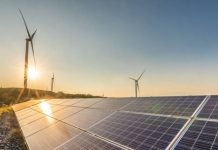Inclusive growth means more people benefiting from the expansion of the economy, not only the rich accumulating more wealth.
With the strong growth of the Philippine economy in the last six years, with average growth rate rising to around 6.2 percent from about three percent in the past, it is sad that more people still live in poverty.
Thus, the Duterte administration has proposed several tax reforms, citing that the current tax system in the country have lots of loopholes, which hampers the inclusion of more people from the domestic expansion and limits the country’s competitiveness, among others.
Finance Secretary Carlos Dominguez III, in his speech during the 1 with the 99 Tax Forum in EDSA Shangri-La Wednesday, said reforms in the tax system targeted to slash poverty incidence rate in the country to 14 percent by 2022.
Philippine Statistics Authority (PSA) data show that poverty incidence among Filipinos is estimated at 21.6 percent as of end-2015, lower than the 25.2 percent in 2012.
Subsistence incidence, or share of those with incomes below the food threshold, was estimated at 8.1 percent in end-2015, down from the 10.4 percent in the previous three years.
How will the government ensure that more Filipinos have money to finance even their basic needs?
Dominguez said this could be done if more people would be able to go to school, healthy and eventually find quality jobs, which in turn would be provided by higher investments on infrastructure.
The current government targets to spend at least PHP8 trillion until 2022 for its massive infrastructure program, called “Build, Build, Build!”.
Domiguez said the government’s “ambitious” infrastructure program aimed to “allow the economy to be as efficient as the economies of our progressive neighbors.”
“We have called our infra program “Build, Build, Build!” to emphasize the urgency of addressing the congestion and inefficiency that threaten to choke our economic expansion. Bad infra can only contribute to economic exclusion,” he said.
The Finance chief said bringing the country’s infrastructure and logistics backbone at par with other Asian countries and aligning tax rates to regional average would enable the country to be among the high-income economies by 2040. (PNA)






